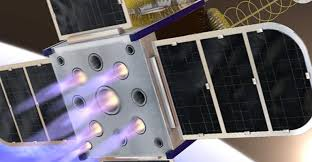
Breaking News
 $26M Frozen on Blockchain - With One Click
$26M Frozen on Blockchain - With One Click
 Italy are on national strike shutdown rejecting digital enslavement...
Italy are on national strike shutdown rejecting digital enslavement...
 The following U.S. states are currently using the rebranded "Reporty Homeland Security" so
The following U.S. states are currently using the rebranded "Reporty Homeland Security" so
 NATO Chief Urges Europe To Prepare For Long-Term World War With Russia, China, Iran & North Korea
NATO Chief Urges Europe To Prepare For Long-Term World War With Russia, China, Iran & North Korea
Top Tech News
 HUGE 32kWh LiFePO4 DIY Battery w/ 628Ah Cells! 90 Minute Build
HUGE 32kWh LiFePO4 DIY Battery w/ 628Ah Cells! 90 Minute Build
 What Has Bitcoin Become 17 Years After Satoshi Nakamoto Published The Whitepaper?
What Has Bitcoin Become 17 Years After Satoshi Nakamoto Published The Whitepaper?
 Japan just injected artificial blood into a human. No blood type needed. No refrigeration.
Japan just injected artificial blood into a human. No blood type needed. No refrigeration.
 The 6 Best LLM Tools To Run Models Locally
The 6 Best LLM Tools To Run Models Locally
 Testing My First Sodium-Ion Solar Battery
Testing My First Sodium-Ion Solar Battery
 A man once paralyzed from the waist down now stands on his own, not with machines or wires,...
A man once paralyzed from the waist down now stands on his own, not with machines or wires,...
 Review: Thumb-sized thermal camera turns your phone into a smart tool
Review: Thumb-sized thermal camera turns your phone into a smart tool
 Army To Bring Nuclear Microreactors To Its Bases By 2028
Army To Bring Nuclear Microreactors To Its Bases By 2028
 Nissan Says It's On Track For Solid-State Batteries That Double EV Range By 2028
Nissan Says It's On Track For Solid-State Batteries That Double EV Range By 2028
Safer solid propellant for cubesats

Unlike a traditional composite propellant, which mechanically mixes a fuel and an oxidizer into a high explosive, the new propellant ignites an energetic fuel — really a low explosive. Then hydrogen and nitrogen gases from the burning fuel flow through the solid oxidizer component of the system, which gasifies, mixes with the fuel gases and unleashes significant thrust.
Both components of this binary system, the energetic fuel and the oxidizer, are immune to detonation, a huge advantage over other rocket fuels. Even the shock from the detonation of a material like C-4 in direct contact with the motor would not cause the propellant itself to detonate. Also, because the system uses solid materials, it cannot leak, has no pressurized gases and has no moving parts like a liquid system.
Besides being able to power CubeSats and thus greatly increase their utility and flexibility, the propellant offers safe propulsion for many other applications that typically utilize solid rocket motors, even model rockets.

 Carbon based computers that run on iron
Carbon based computers that run on iron

